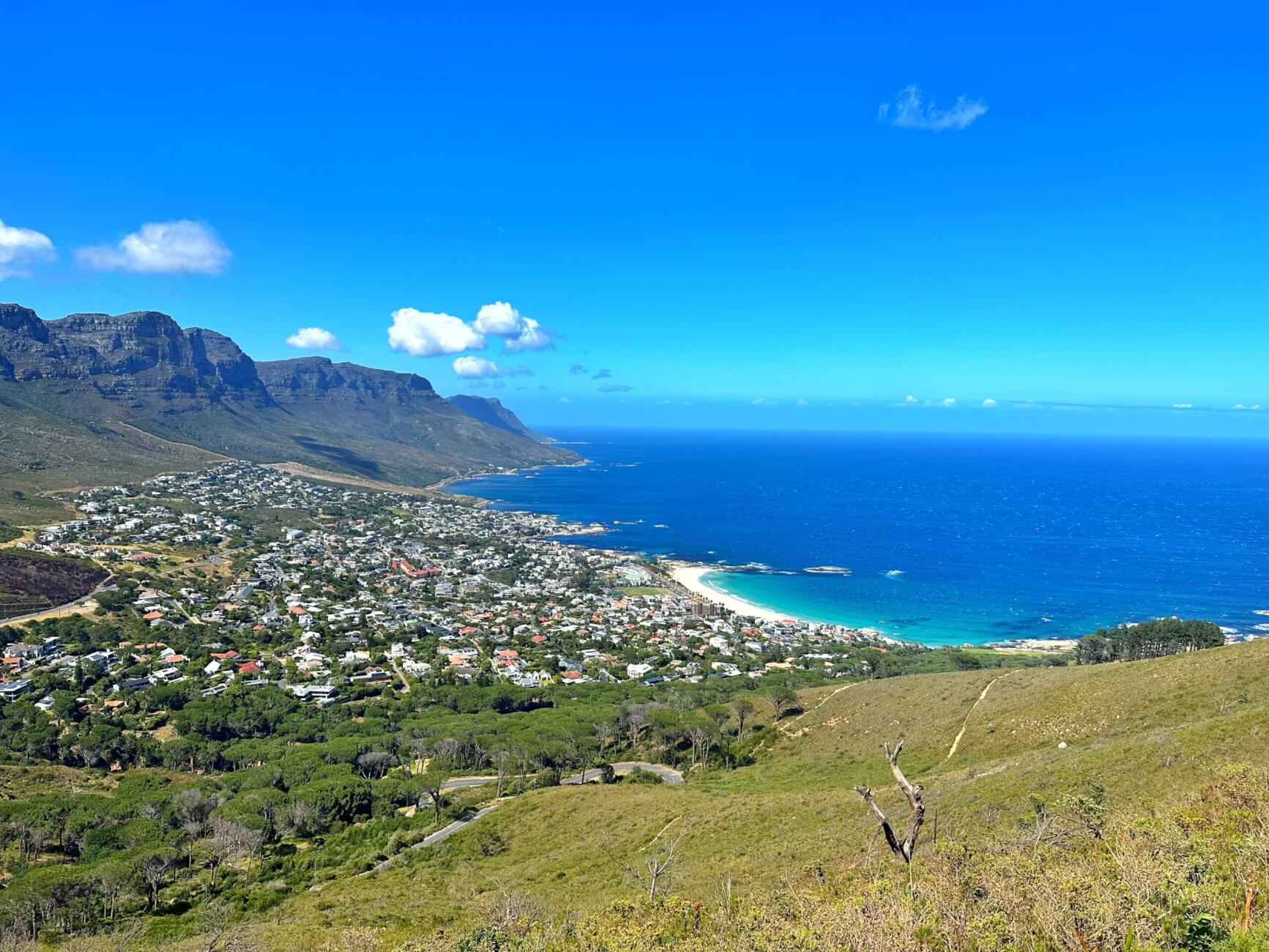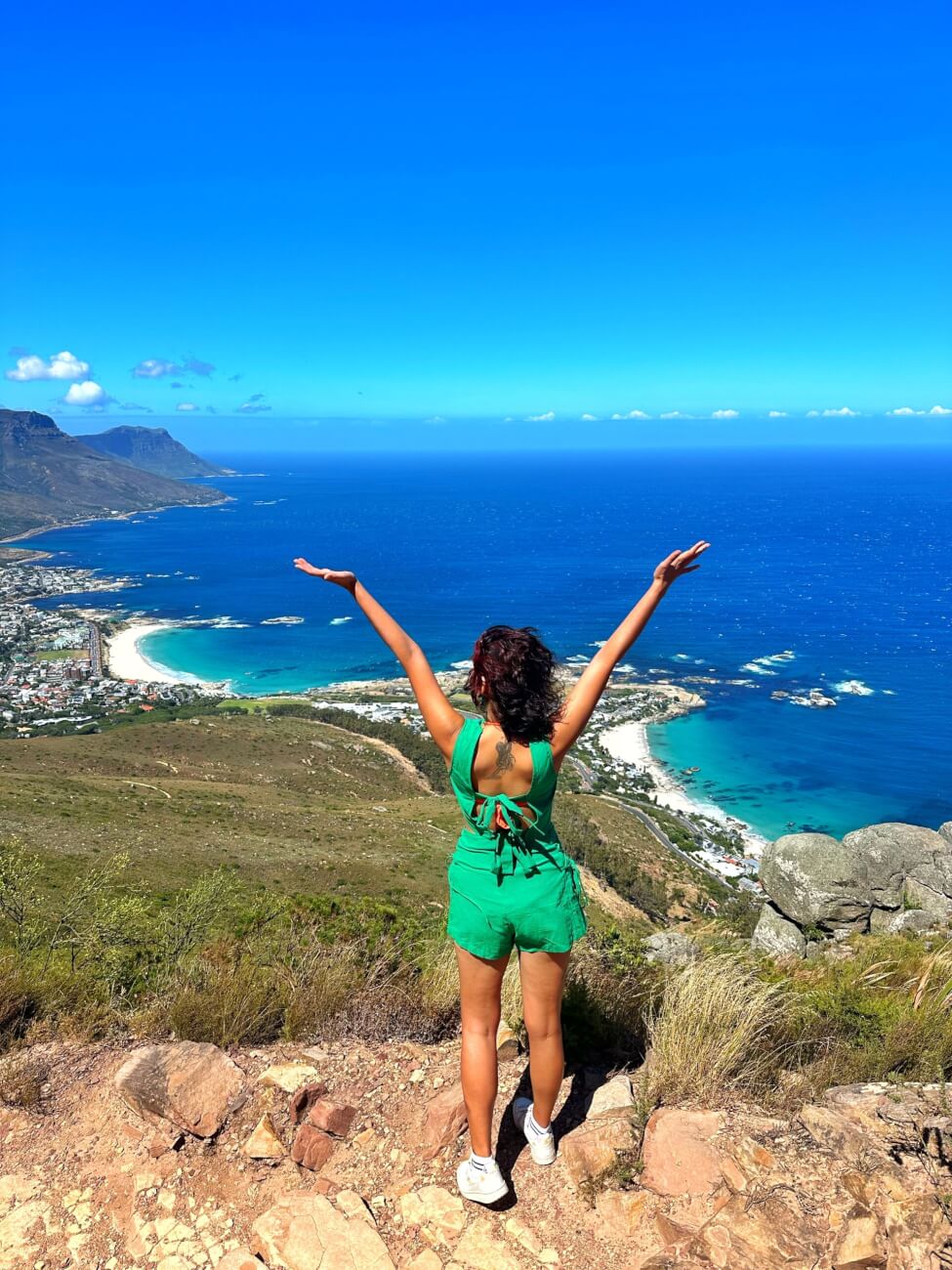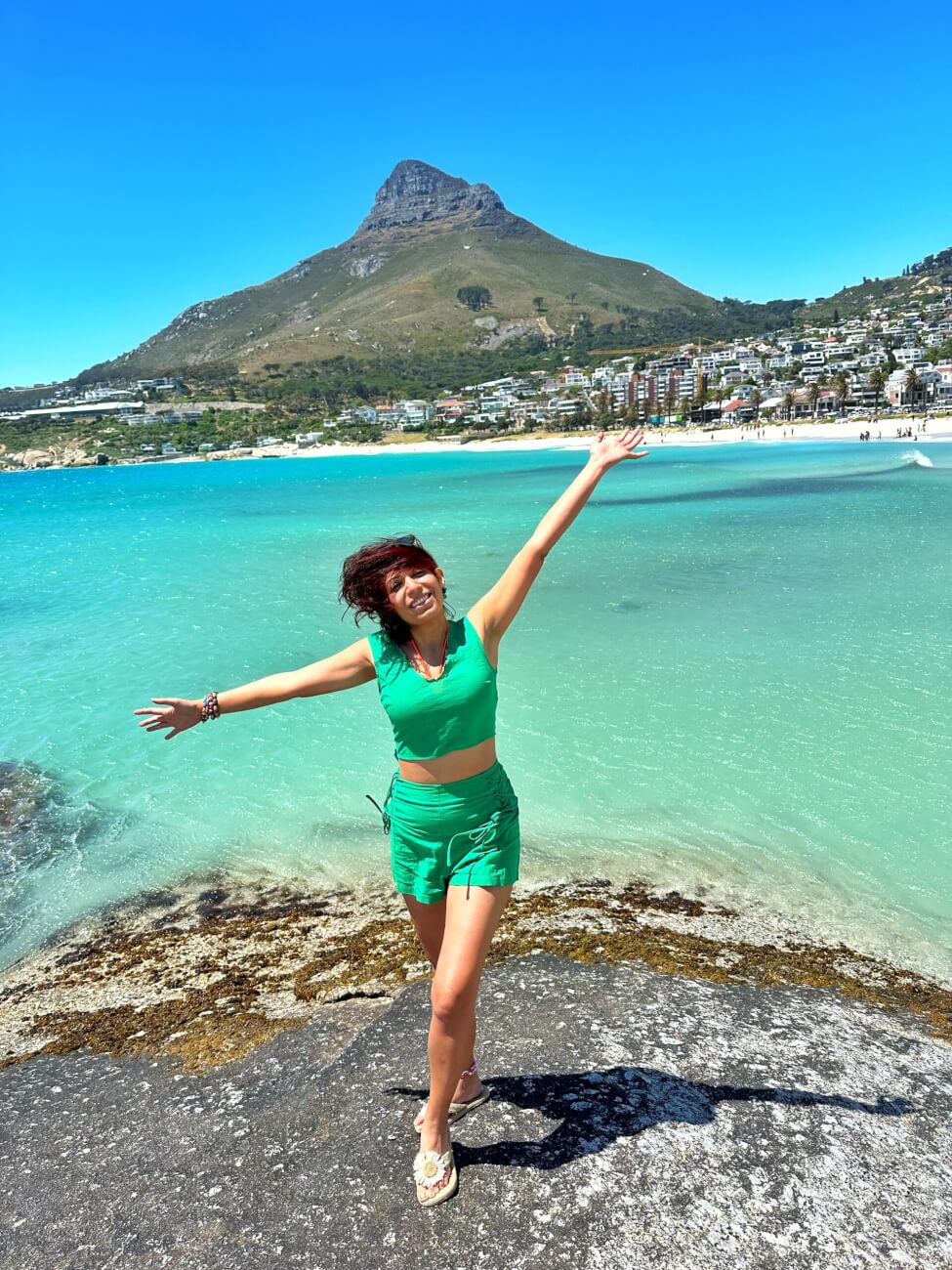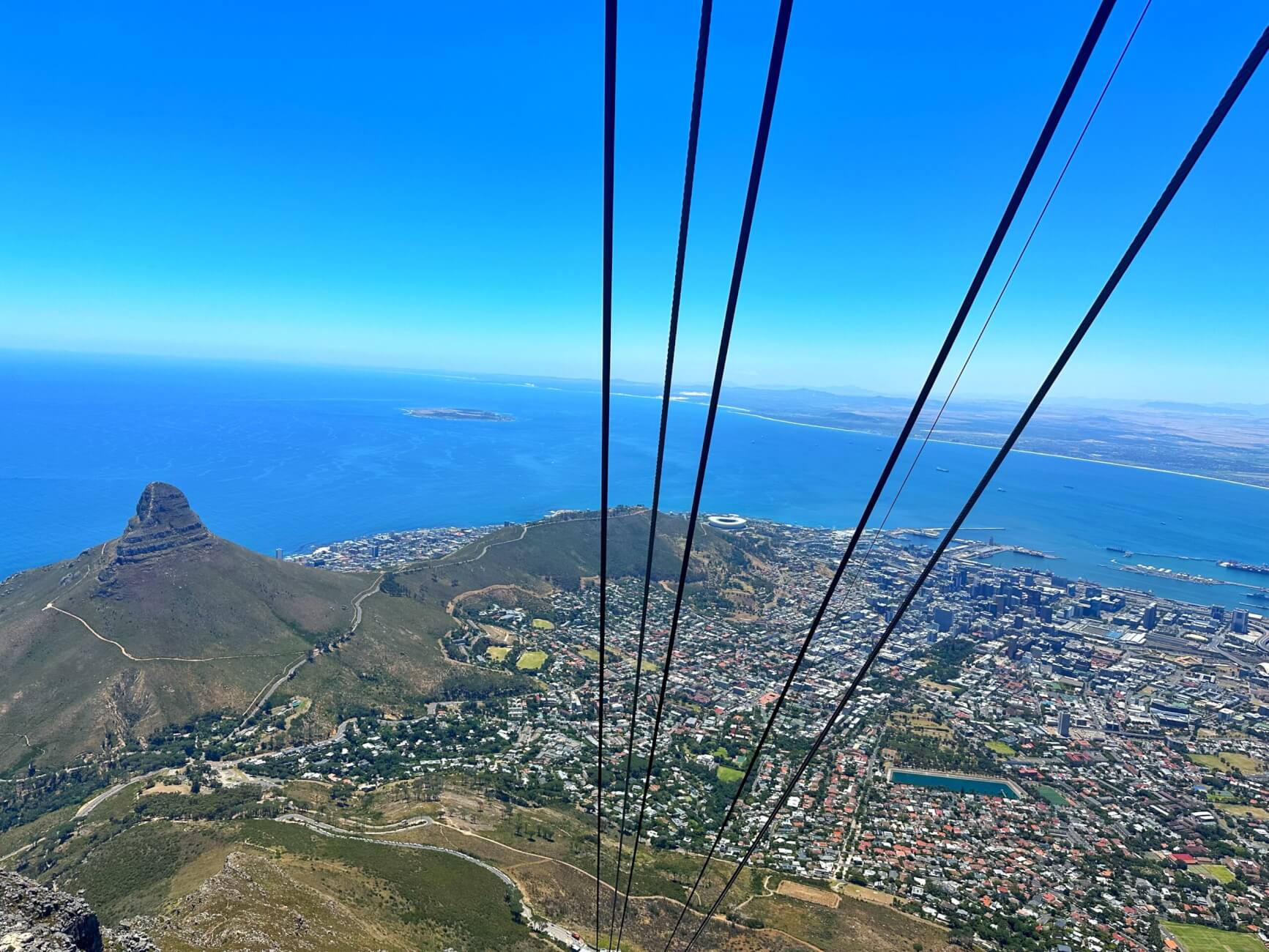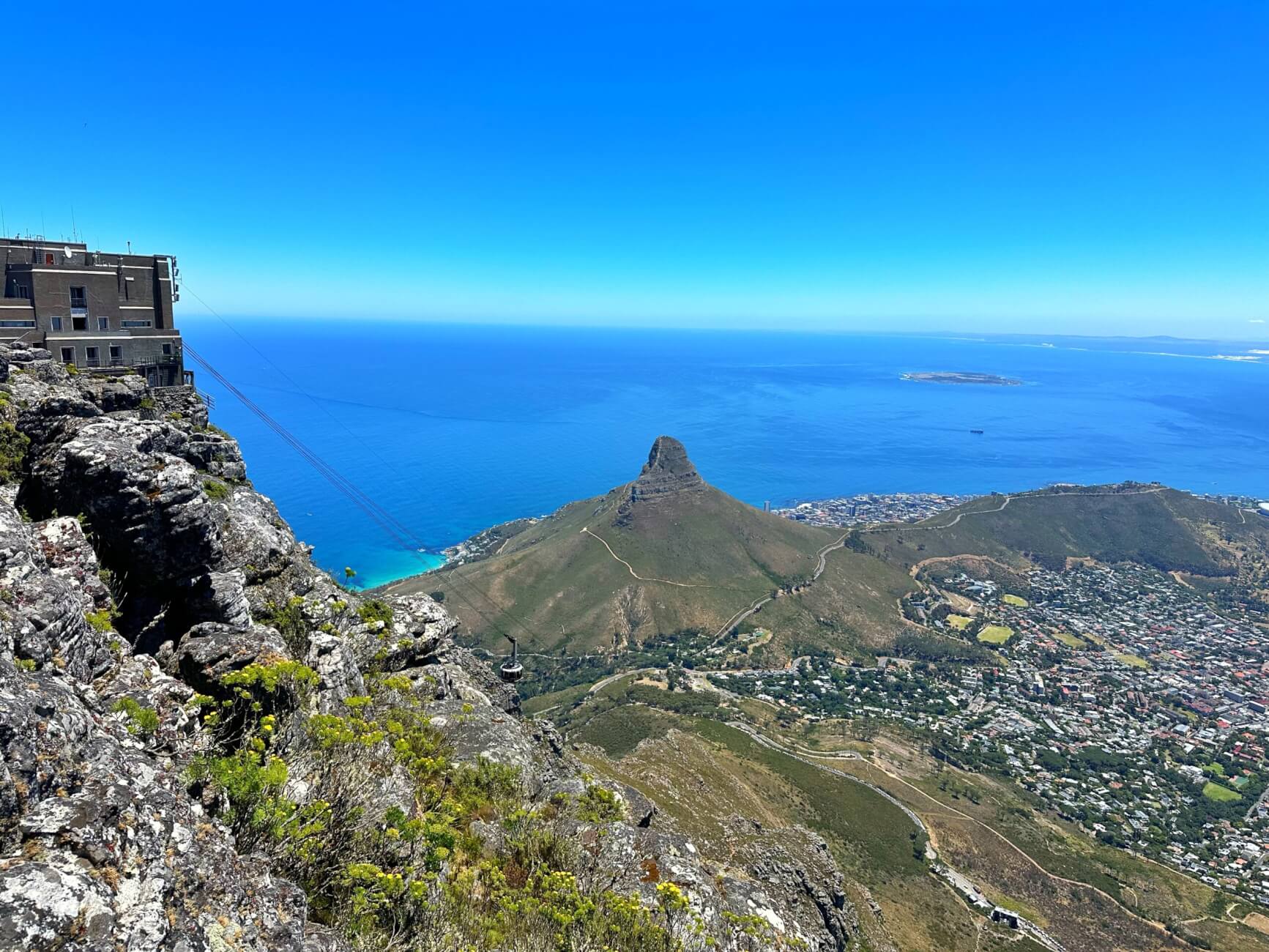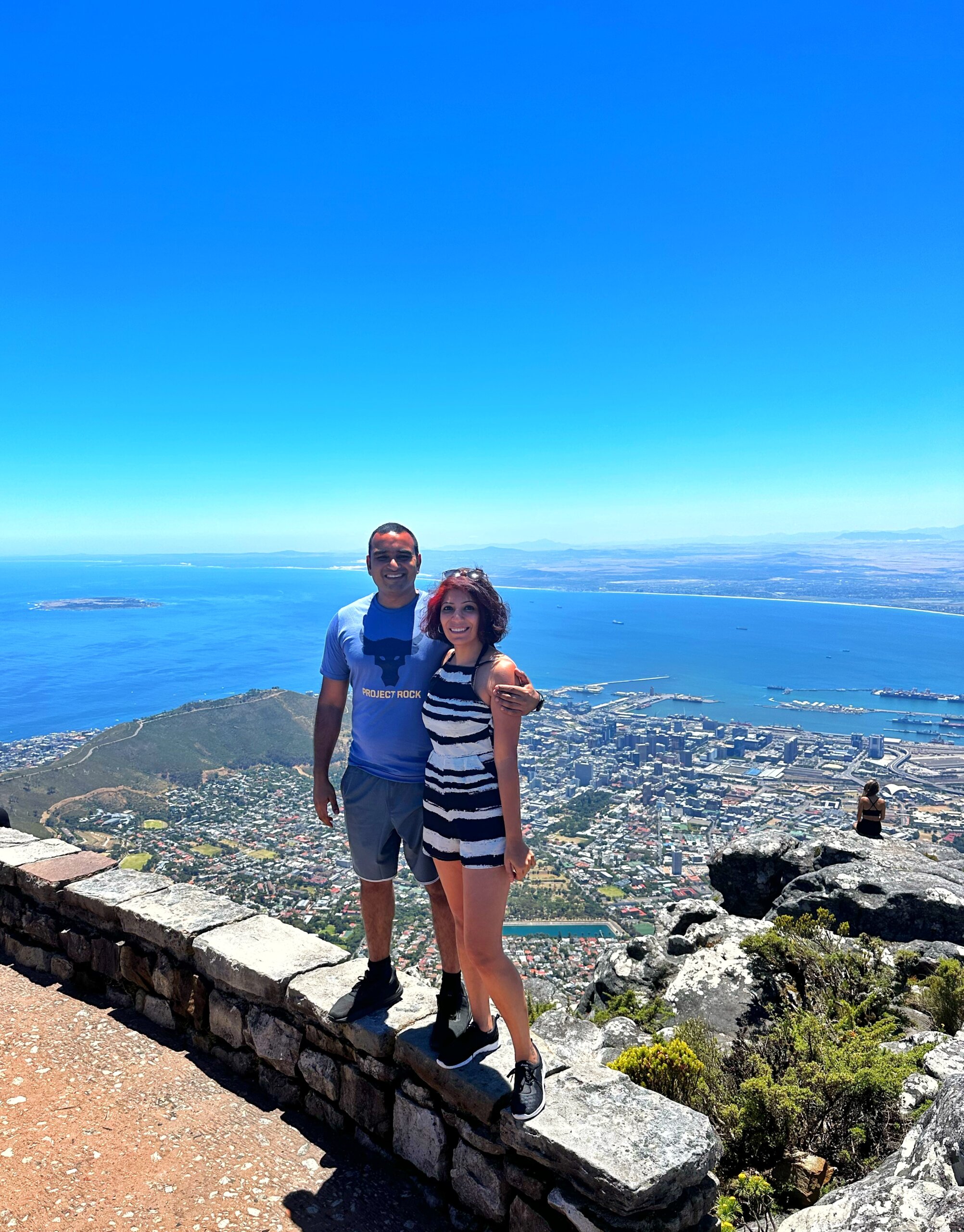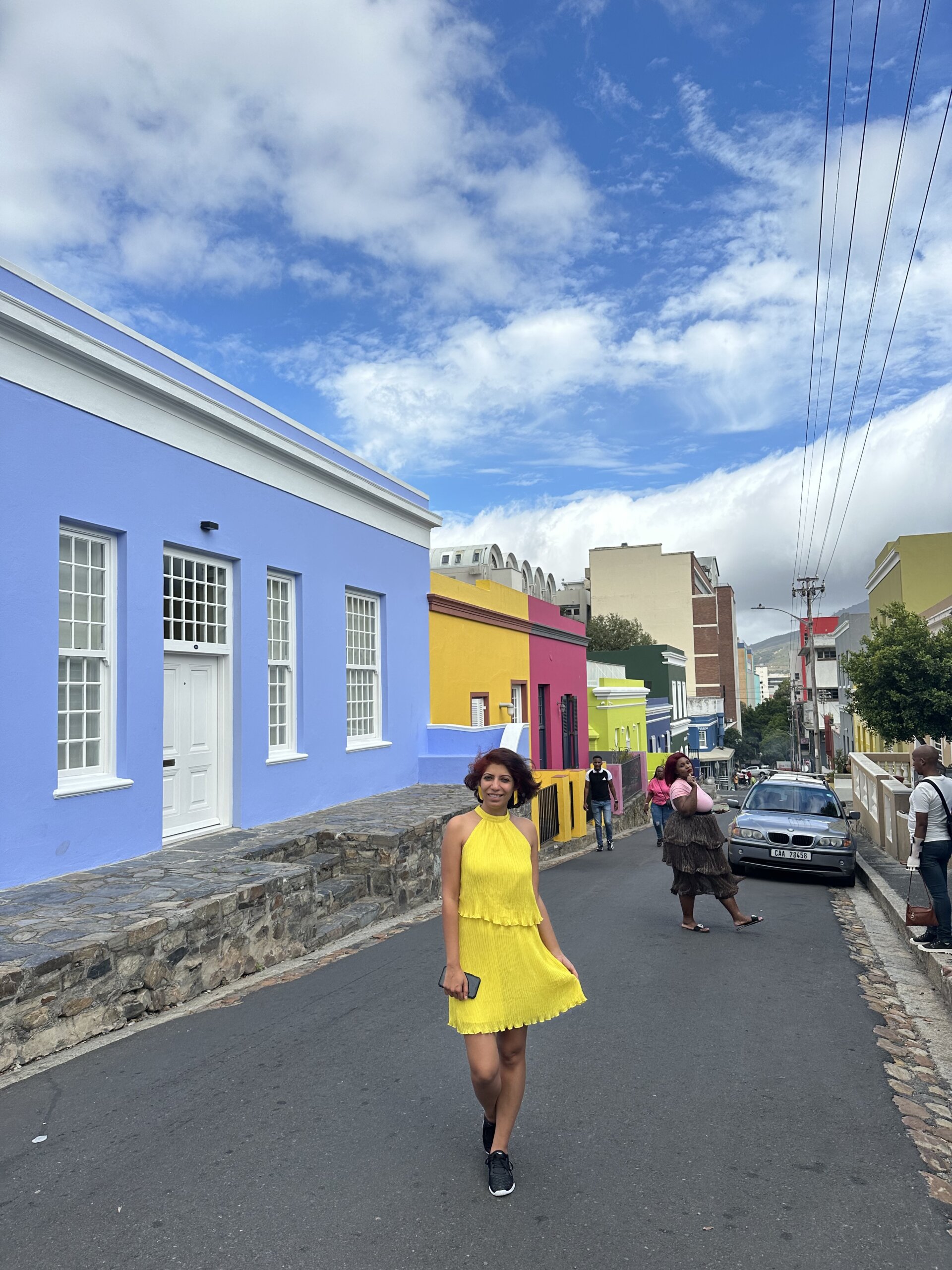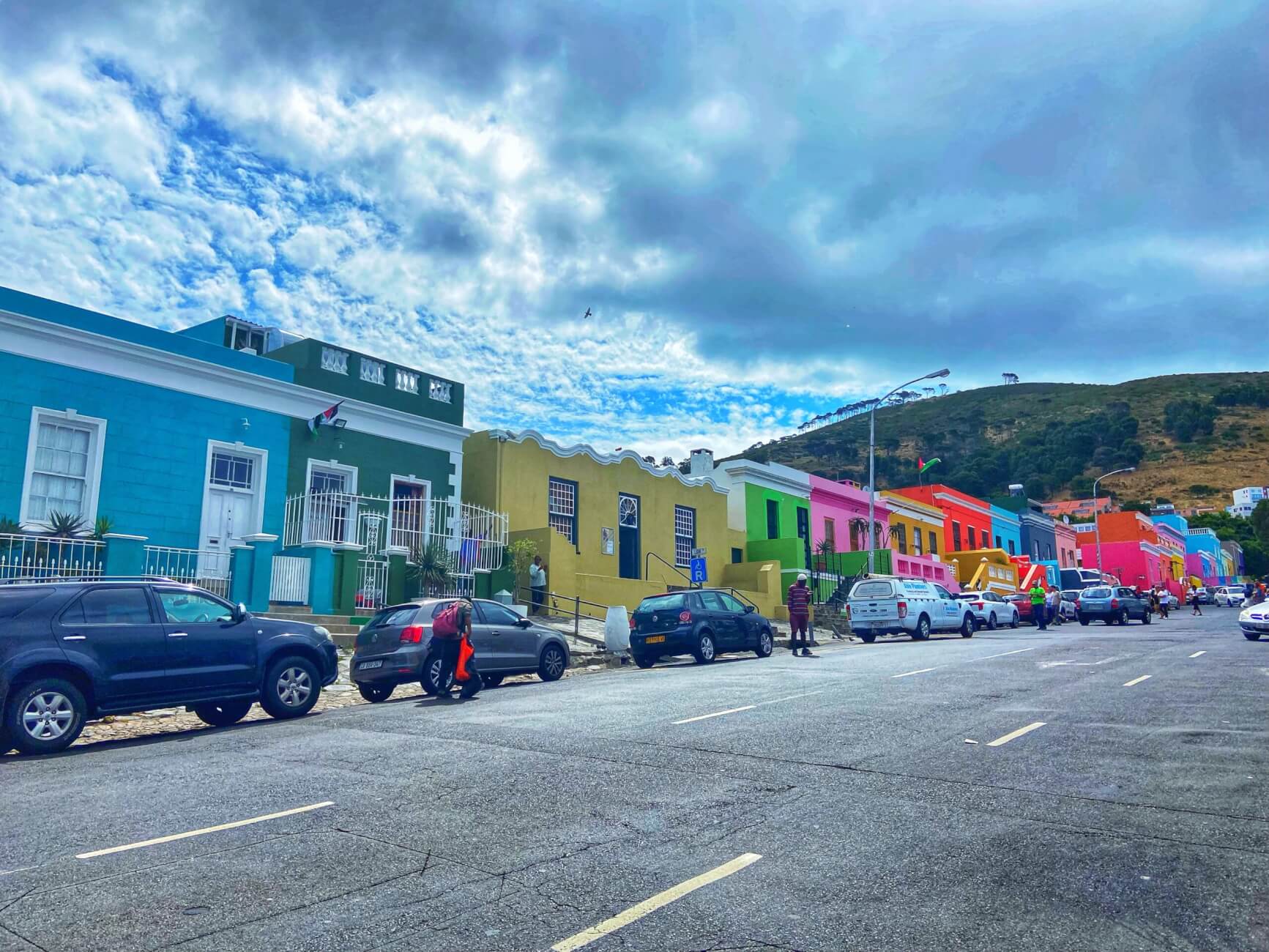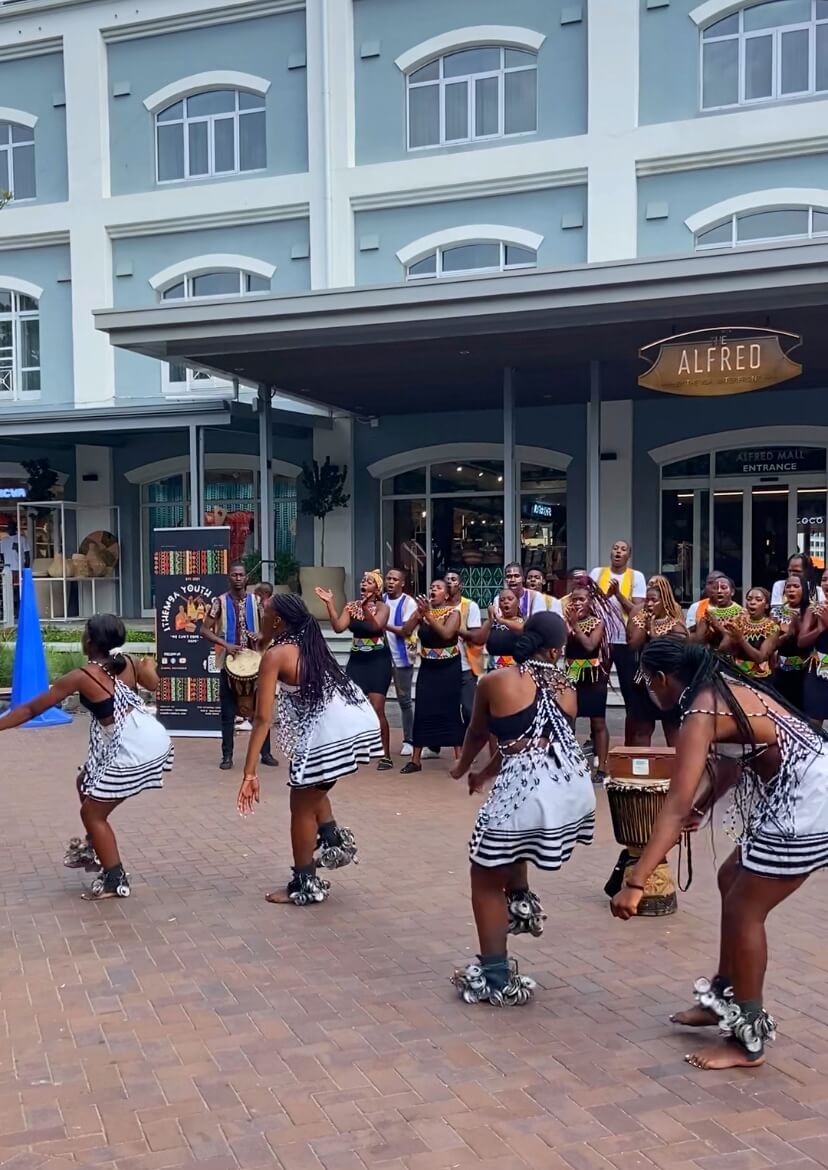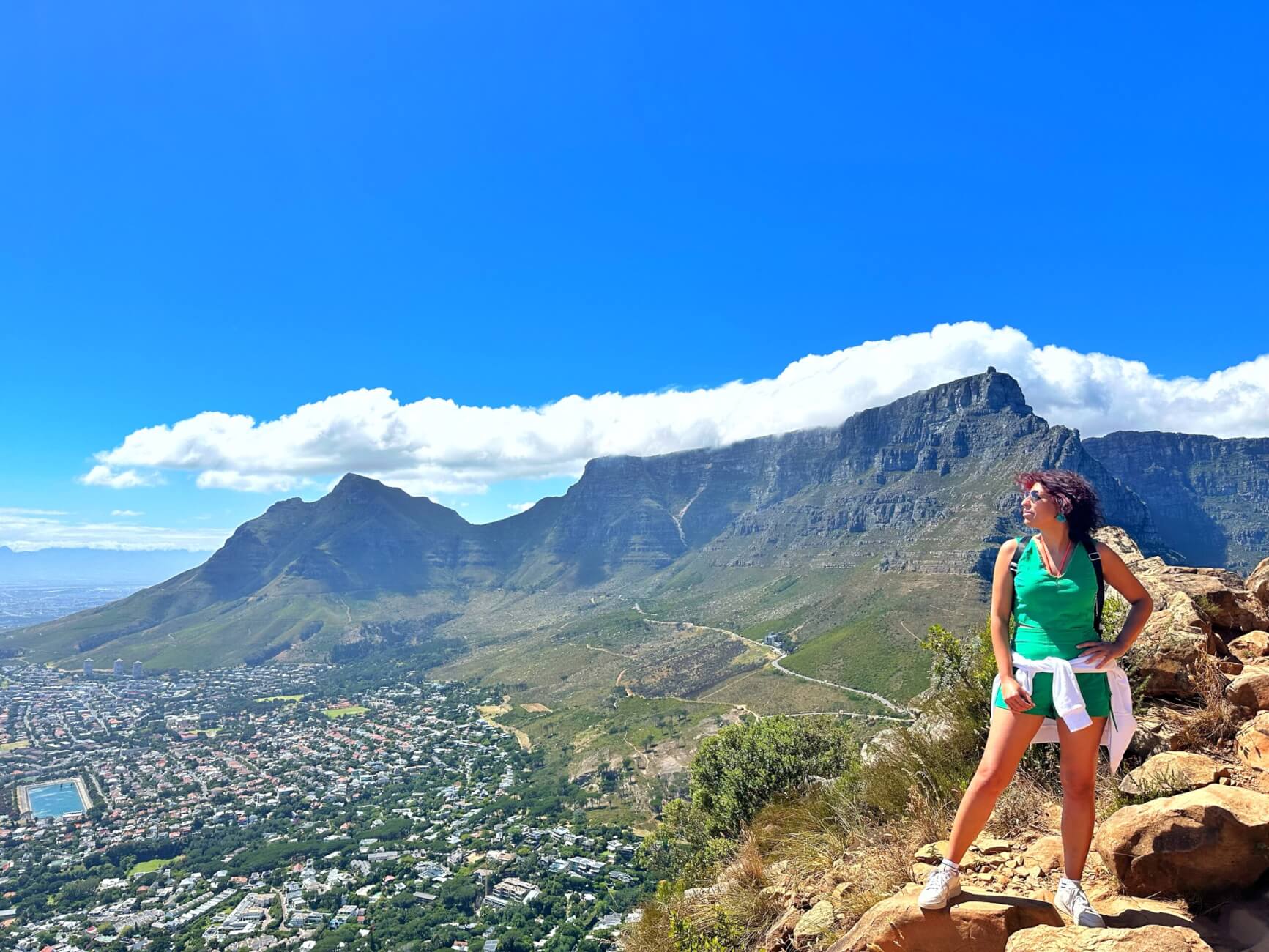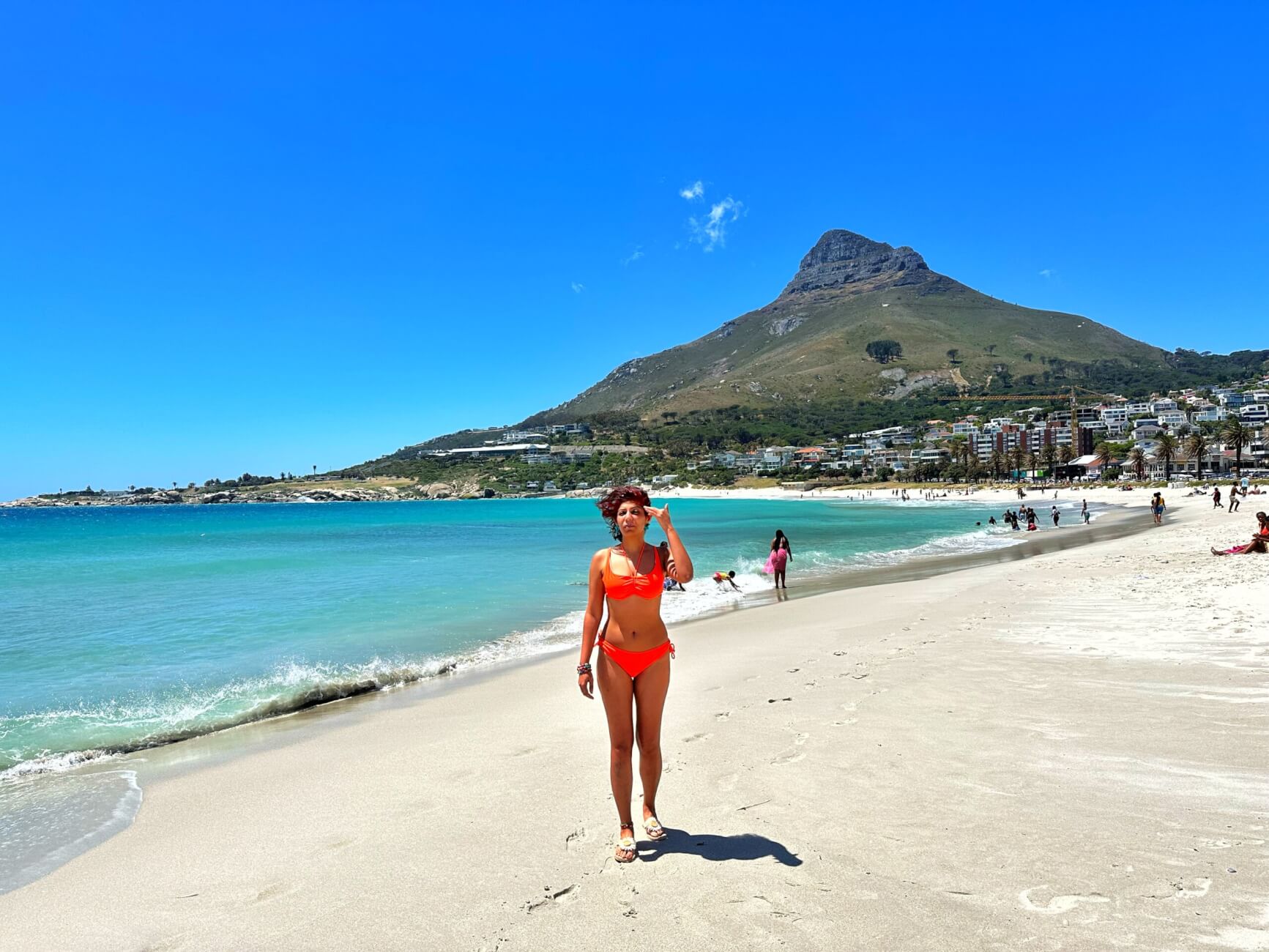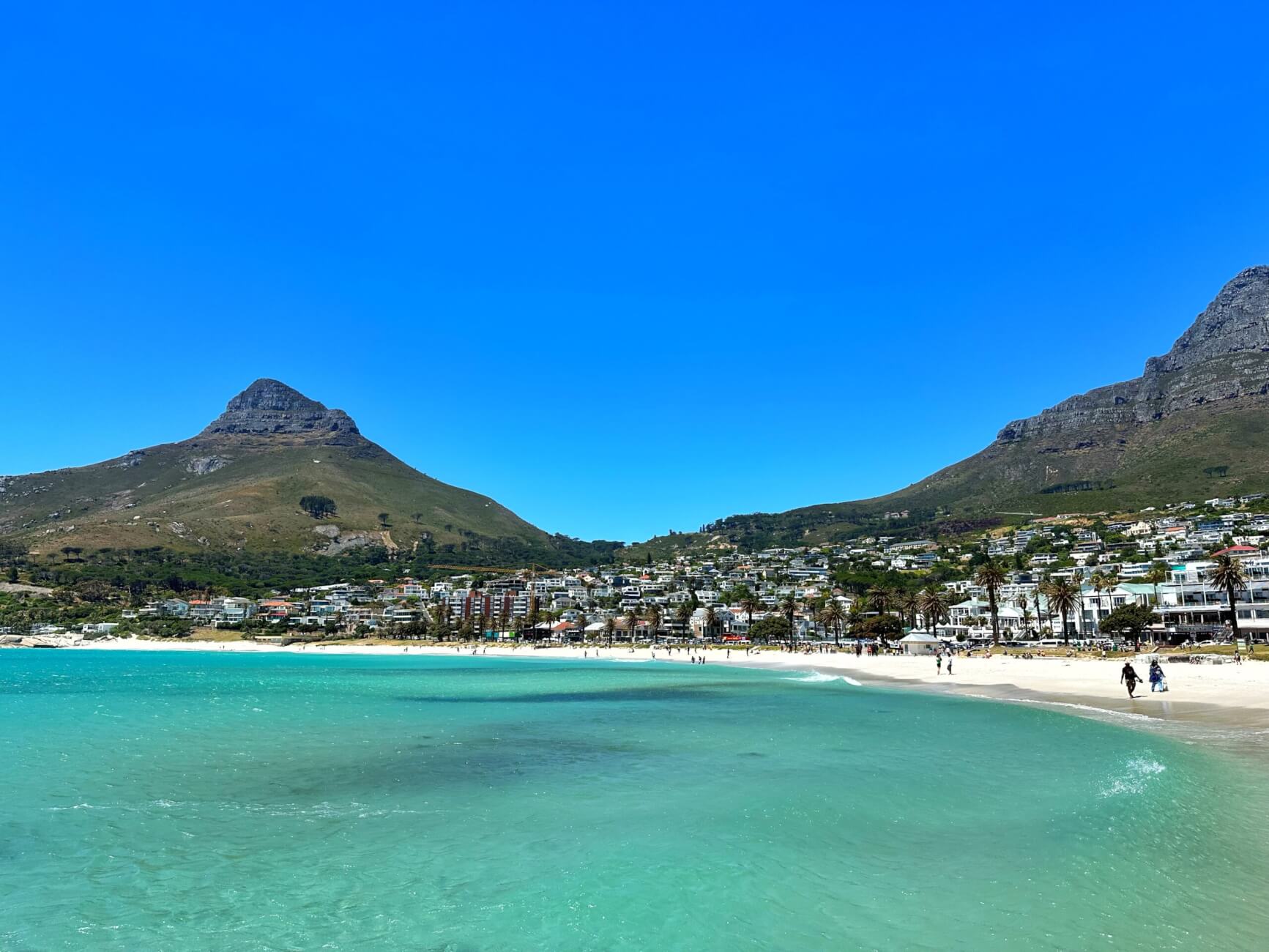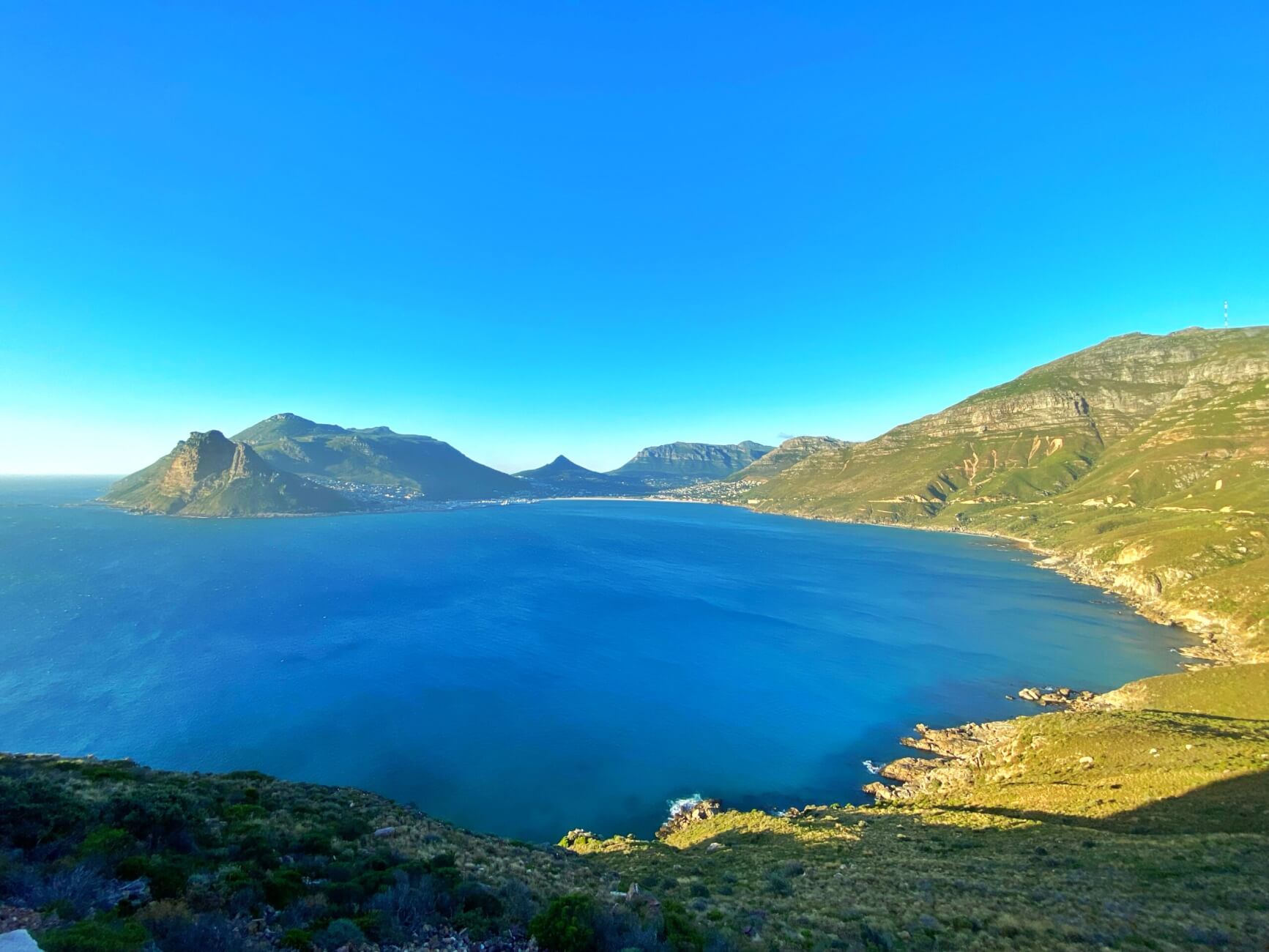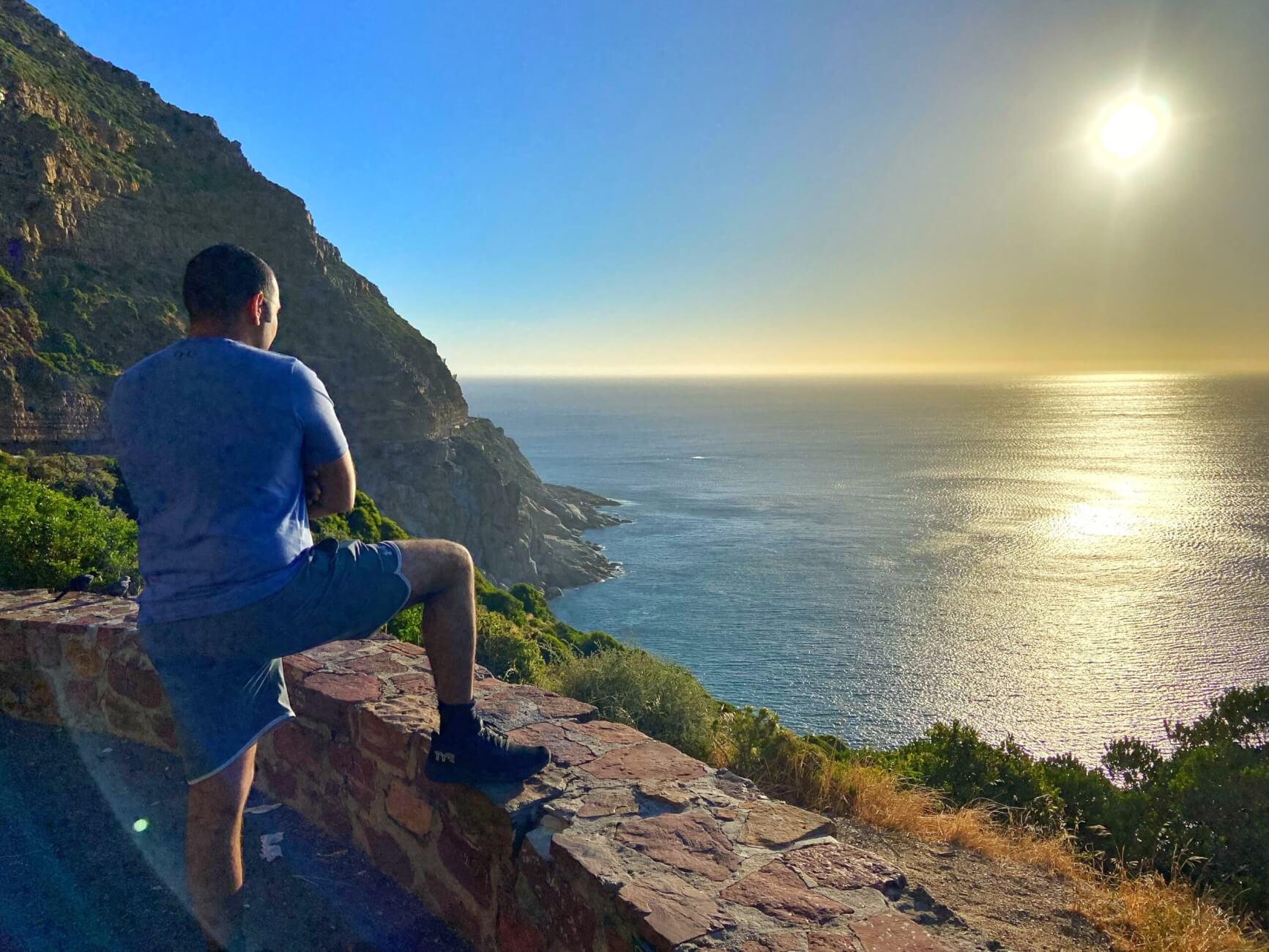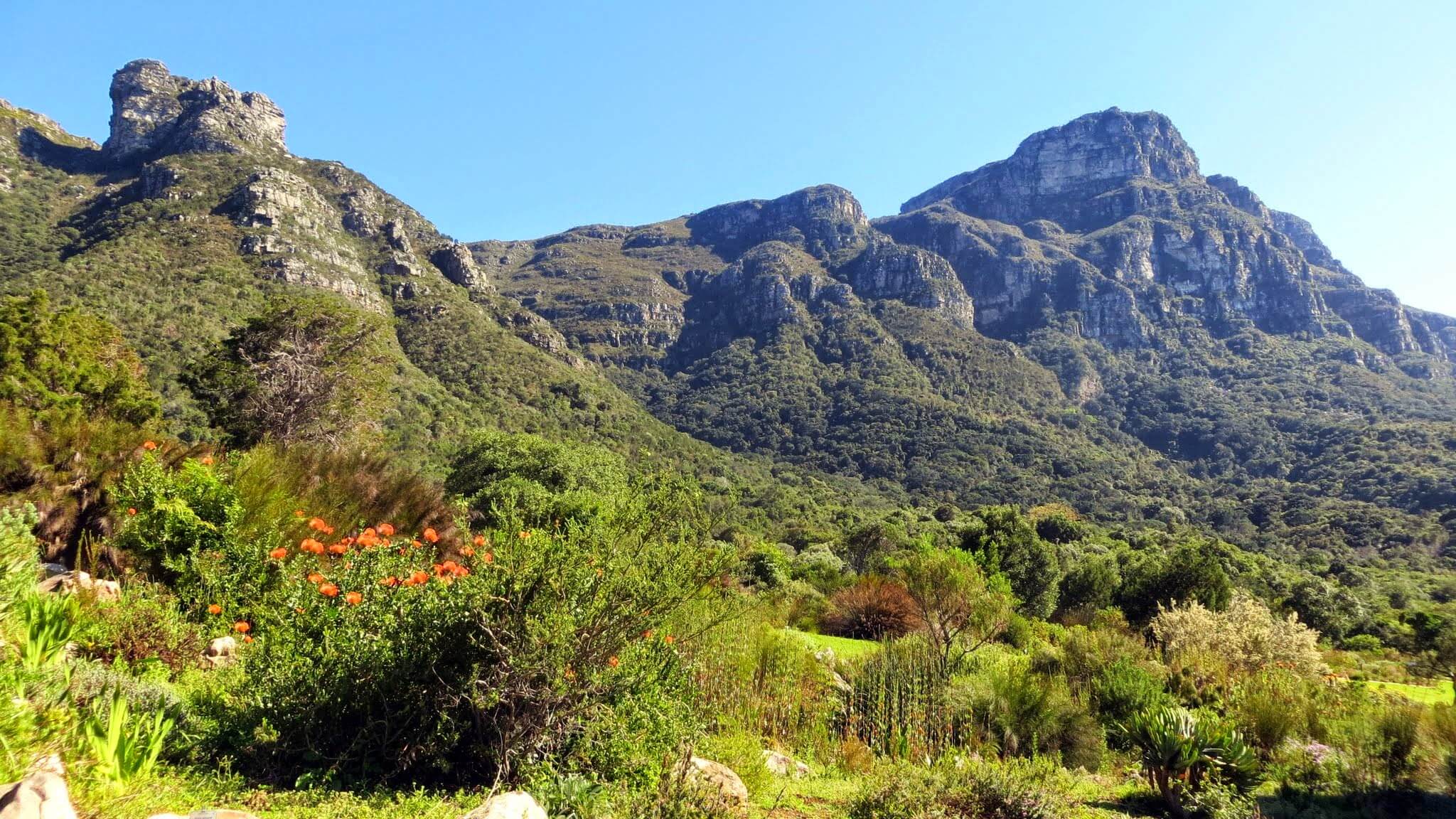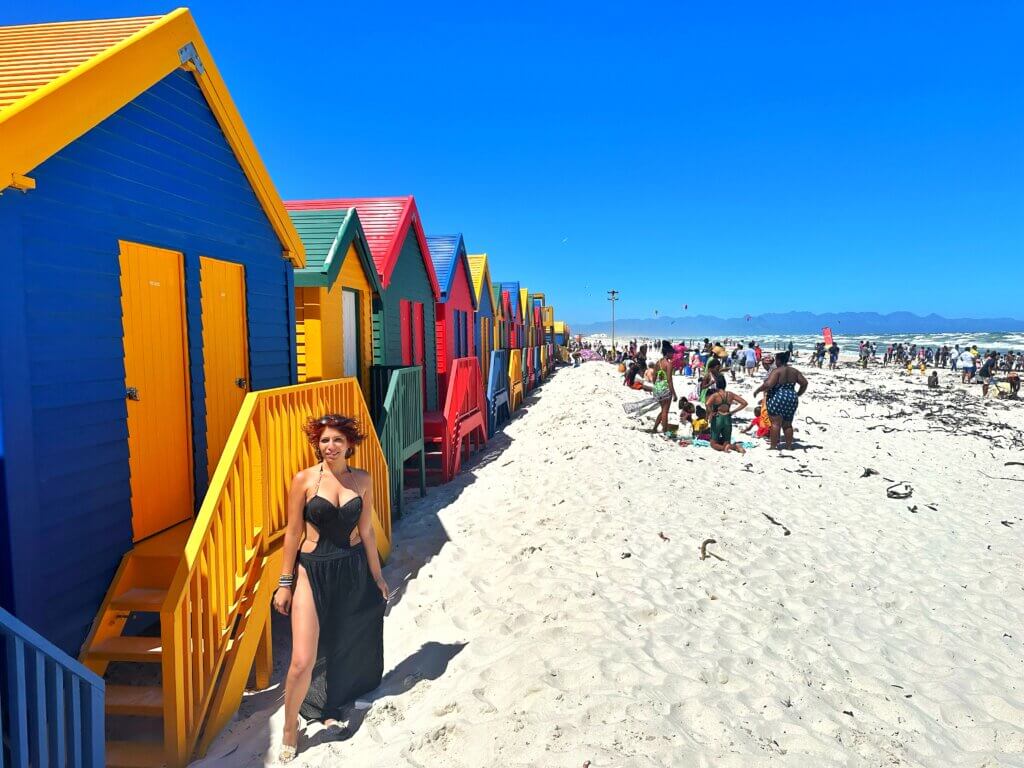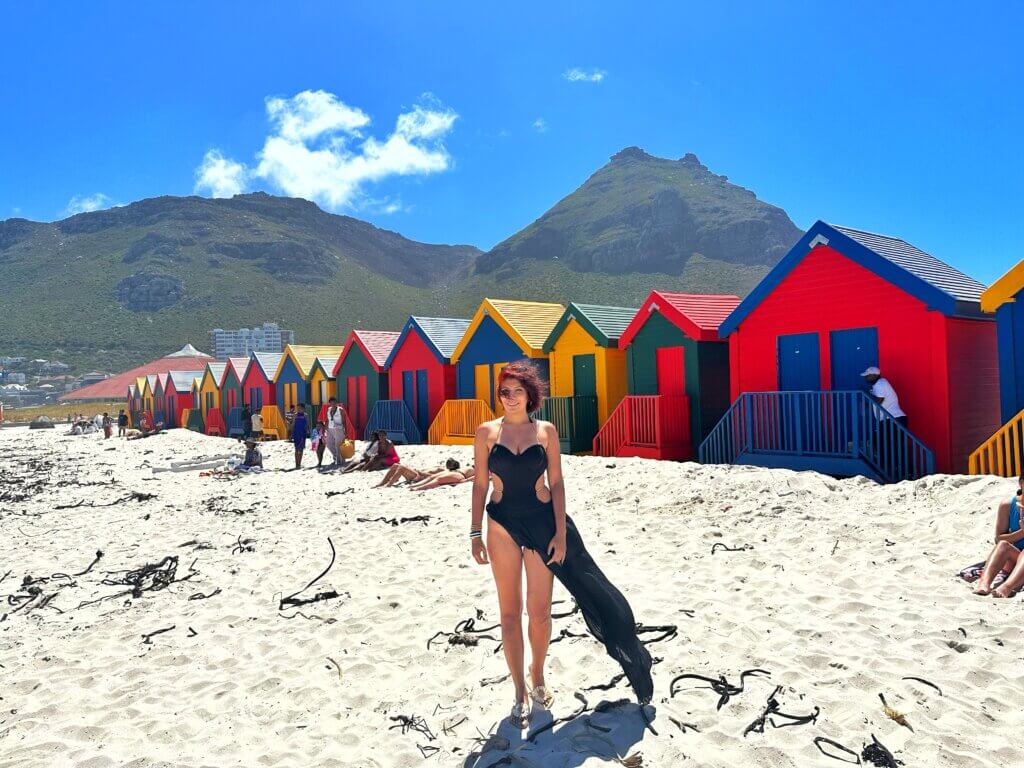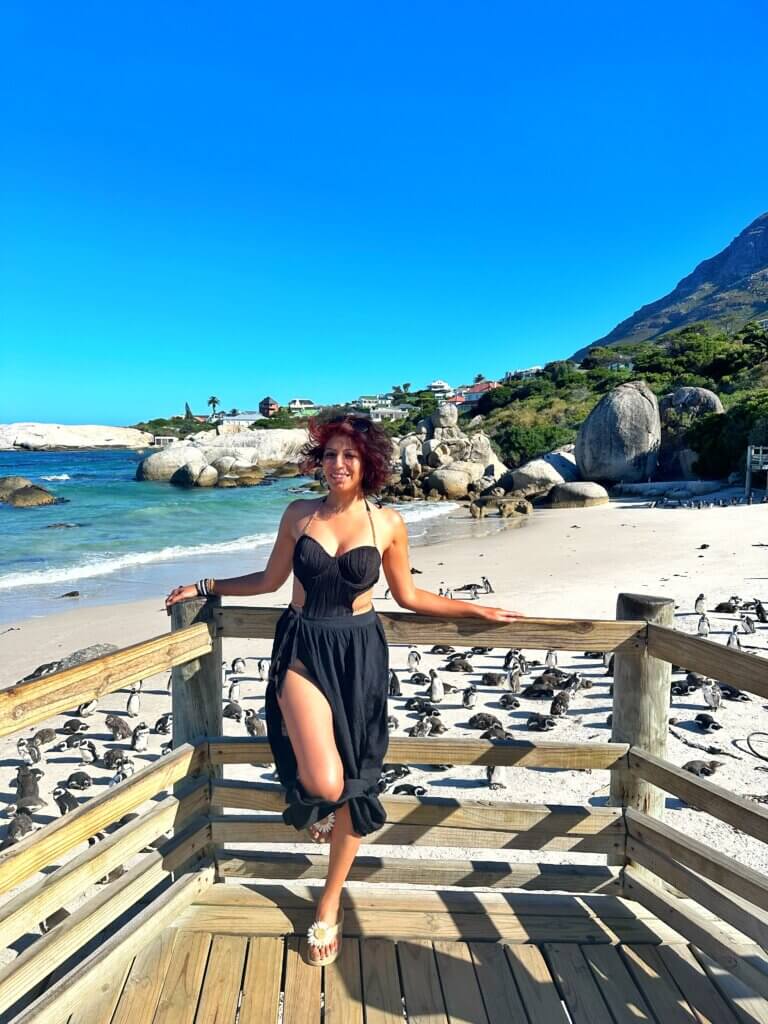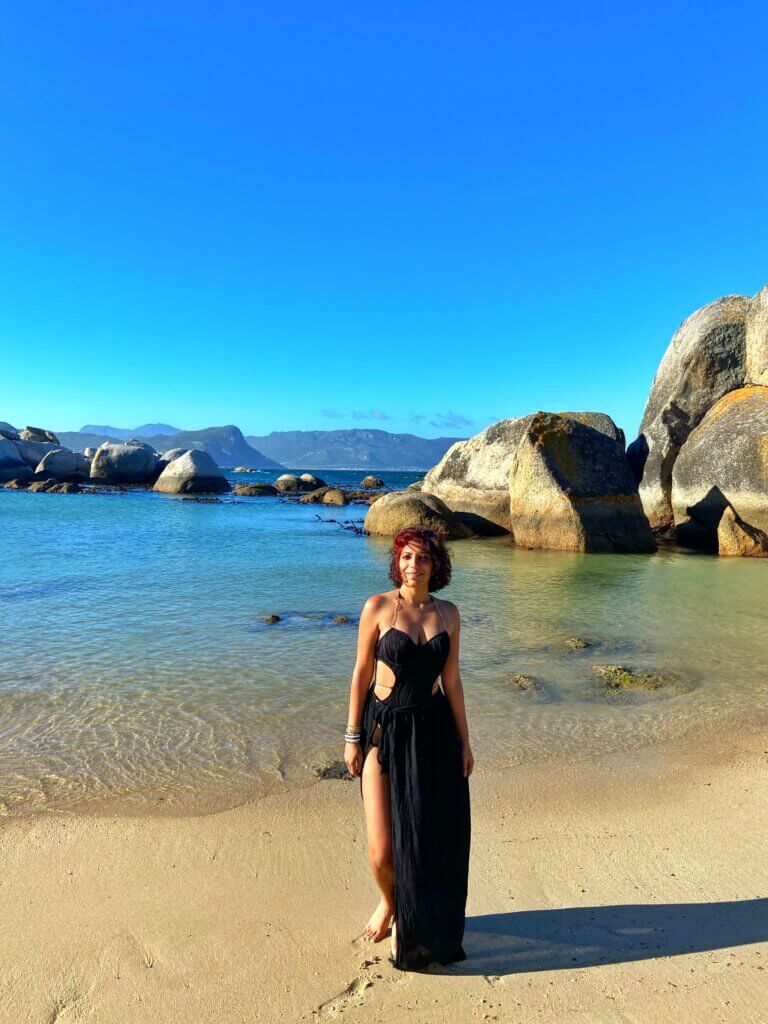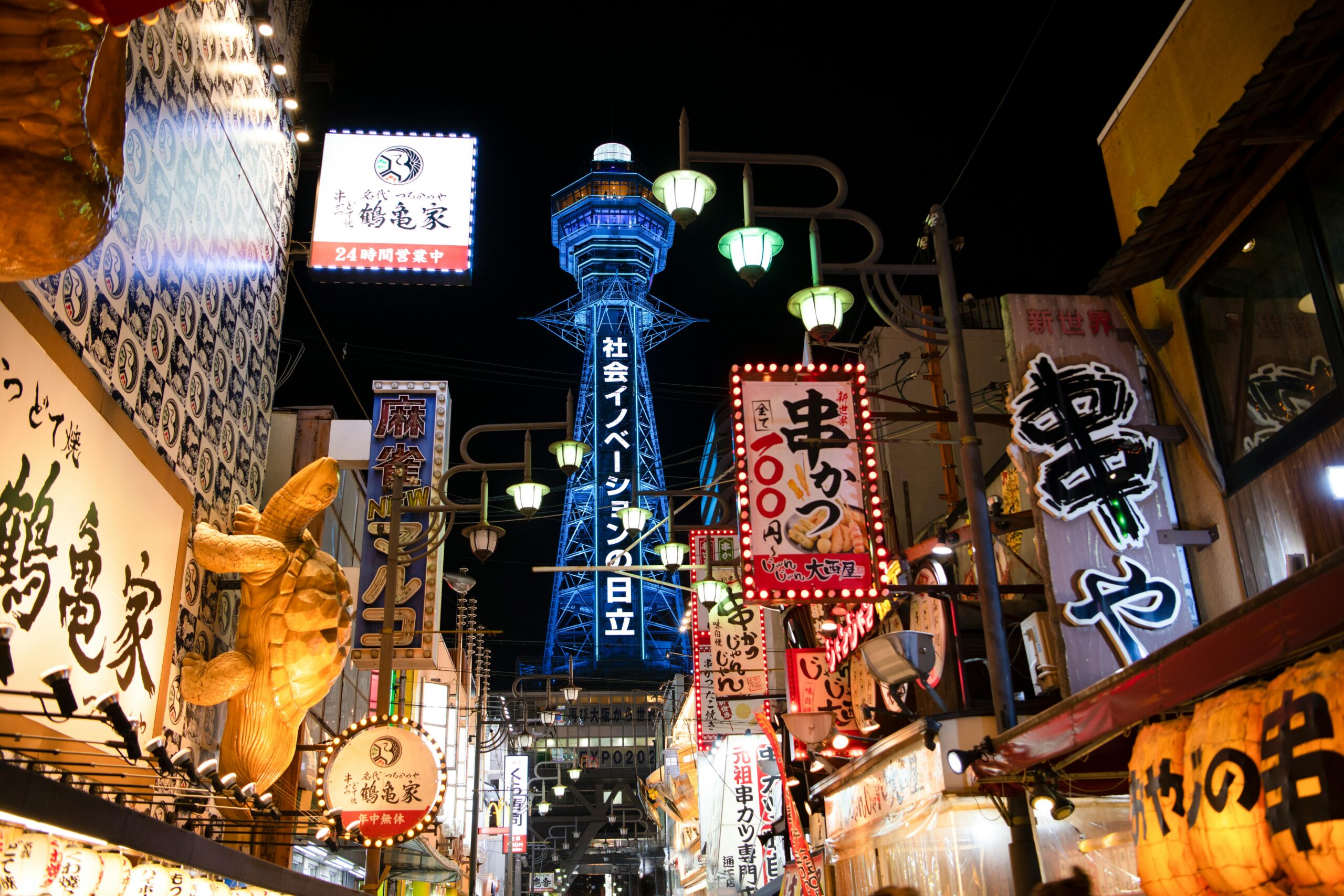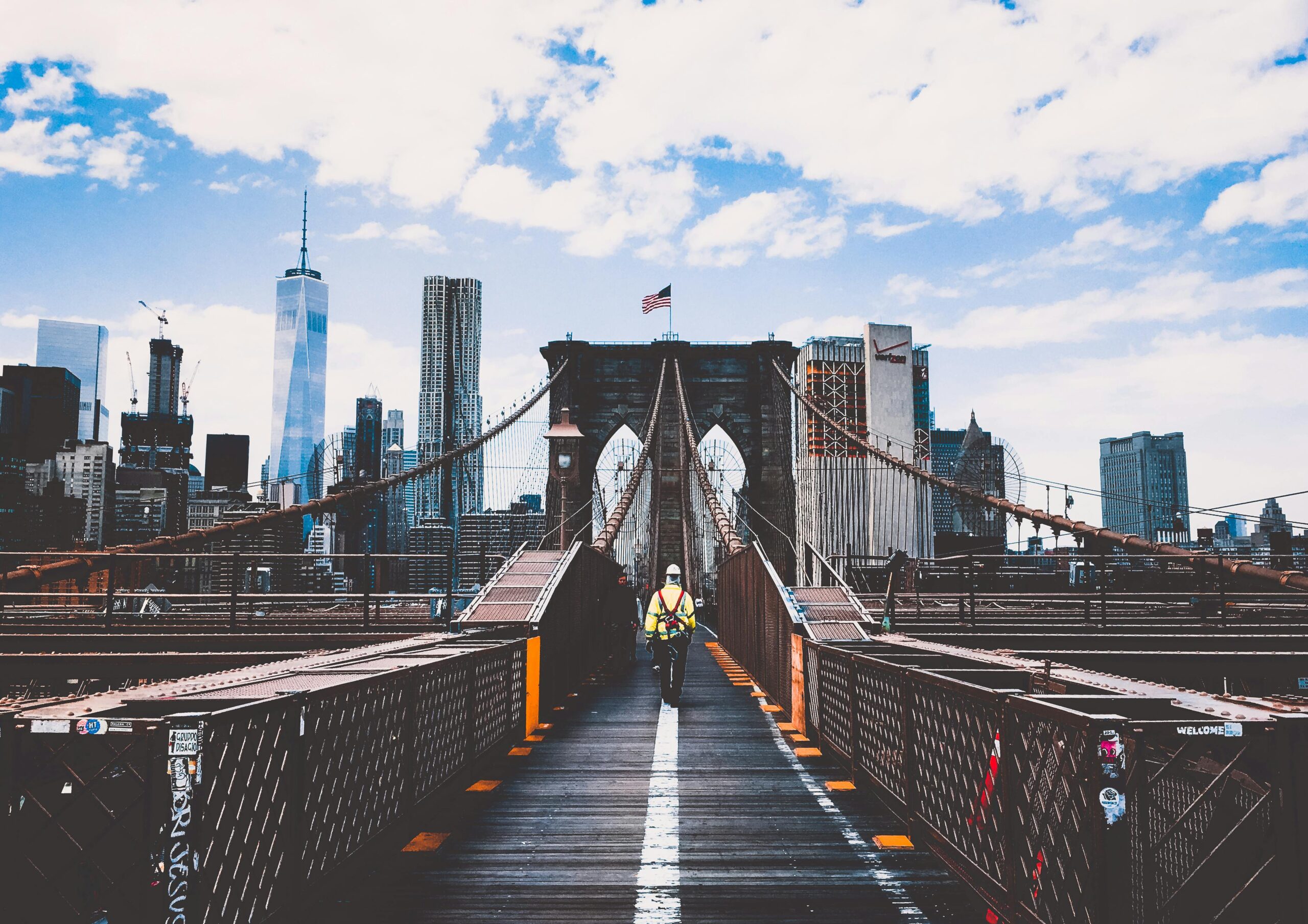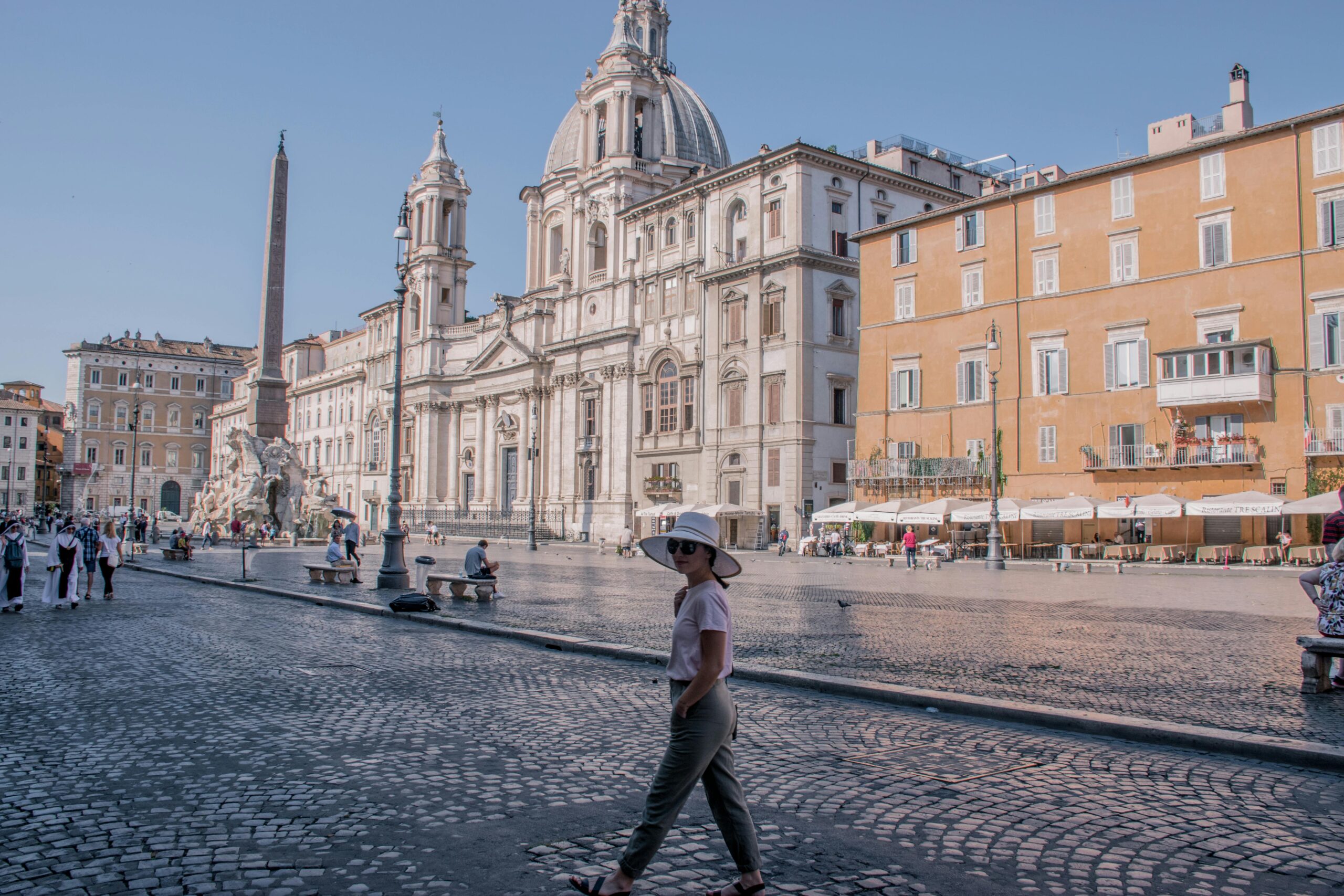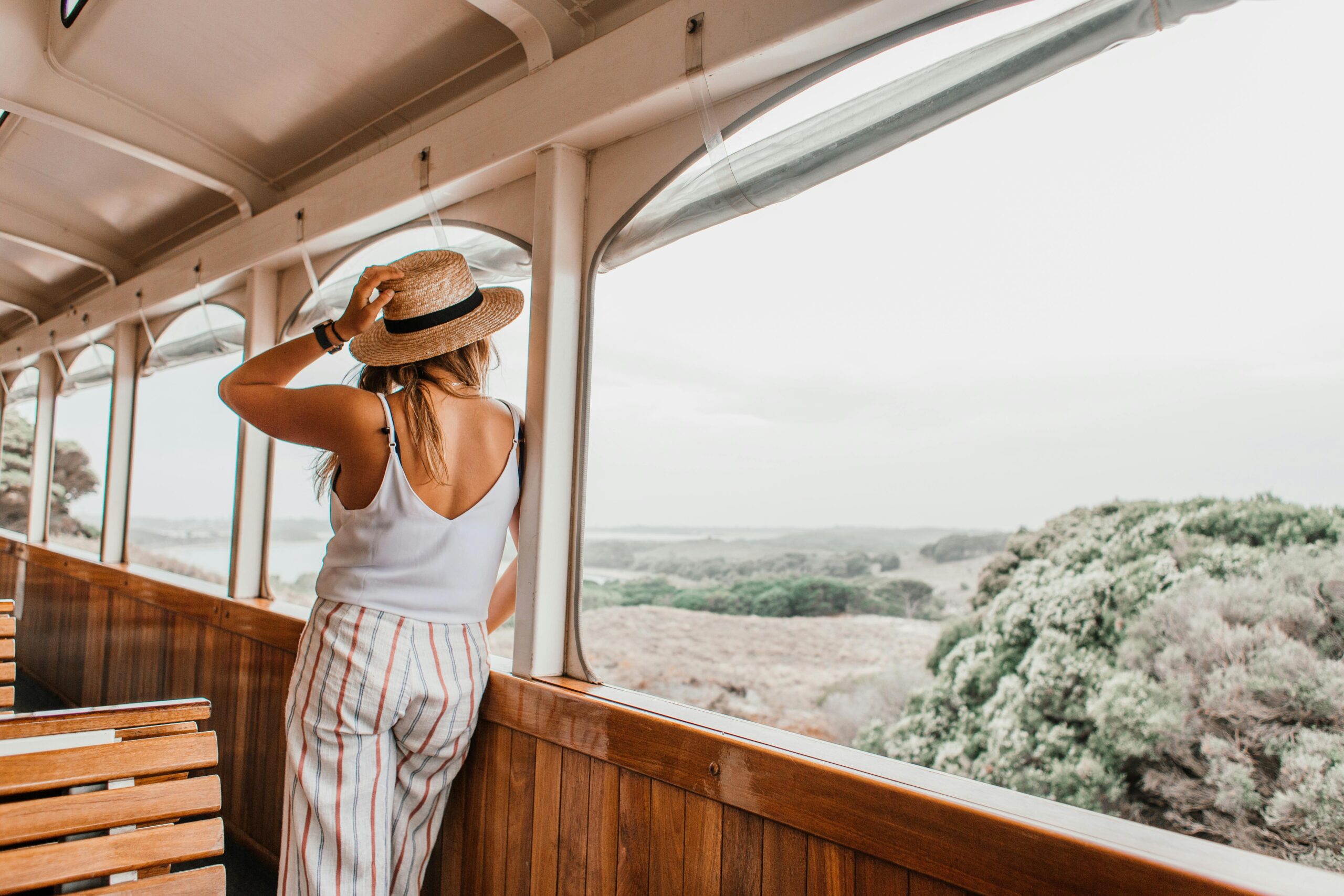Nestled beneath the iconic Table Mountain, Cape Town with its breathtaking coastal scenery, world-class vineyards, and diverse culinary scene, captivates visitors from around the globe. I recommend renting your car at the airport itself when you arrive as it will ease your trip to a great extent if you do that. Cape Town is an easy and convenient city to drive in (unlike most large cities which are usually chaotic and crowded) and while street parking can be slightly risky, it provides you the flexibility to travel from one spot to another without worrying about the crime situation (being mugged). Alternatively, if you decide to not rent a car at the airport, I highly recommend you use only Uber taxis to commute from one spot to another as these are the only ones that are considered safe.
Few tips for Cape Town:
- Use only Uber taxis, even from the airport to your destination. You will find a lot of people offering a taxi ride at the airport. DO NOT TRUST ANYONE.
- Do not walk on the streets unless even in the downtown area (except V&A Waterfront), especially if you find them slightly empty, even during daylight hours, although daytime is relatively safer than nighttime. In most areas, you will be advised to take an Uber even for a 300m walk!
- Safety is a massive concern in Cape Town but once you’re out of the city, you’re relatively safer.
- While this can be a huge block in one wanting to visit South Africa, I’d say that as long as you can be vigilant and smart at all times, you will be fine, and you shouldn’t miss an opportunity to visit such an excellent country only because of safety concerns.
Recommended hotel(s) to stay in Cape Town:
Urban Oasis Aparthotel: The location of this hotel was excellent, right in the city center. The area is also comparatively safer due to the presence of a lot of police and security. The hotel provides private parking for a price, but you can also park in the streets right outside. We informed the hotel security to keep an eye out for us on the car at night, and we didn’t seem to have any issues (thankfully).
The hotel has its own restaurant where you can enjoy breakfast as well as dinner late night. On Saturdays, we loved the vibe because they had some live local singers, and the song-and-dance atmosphere was unmatched!
Neighbourgood East City: This is the second hotel we stayed at. While the location of this hotel is great too (right next to the Castle of Good Hope & Street markets, we didn’t feel quite as safe walking here alone. Also, the restaurant of the hotel was closed for an entire weekend which forced us to find other alternatives to have our breakfast as well as dinner.
Day 1 in Cape Town
Table Mountain
Depending on what time you arrive in Cape Town, you can choose where to start your exploration. If you arrive relatively early in the day, make your way Table Mountain. Towering majestically over the city, this iconic landmark offers visitors unparalleled panoramic views of the city. The most popular way to reach the summit is via the Table Mountain Aerial Cableway, which provides a thrilling ascent in a rotating cable car. As you ascend, the sprawling vistas of the city, ocean, and surrounding mountains unfold before your eyes, offering a breathtaking preview of what awaits at the top.
Once you arrive at the top, take a leisurely stroll along one of the designated hiking trails, ranging from easy walks to more challenging routes for the adventurous. There’s also a restaurant up there with a terrace that offers stunning vistas amidst the dramatic landscapes. It tends to get really crowded (and is a self-service outlet) so you might want to head there as soon as you reach, should you have to wait in a queue to get your food and a nice place to sit.
I highly recommend you book your tickets beforehand. Table Mountain tends to get very crowded during the day (and quite hot too); we waited almost 1.5 hrs despite booking our tickets beforehand, just to board the cable car! Keep your sun block, hats and sunglasses handy as the wait is usually under the blistering sun. Keep at least 4-5 hrs for the whole experience.
Bo Kaap
In the afternoon, make your way to Bo Kaap, where you shall experience a vibrant immersion into Cape Town's rich cultural tapestry. This colourful neighbourhood, nestled against the slopes of Signal Hill, is renowned for its picturesque streets adorned with brightly painted houses. Exploring Bo Kaap is a sensory delight. Wander through its narrow, cobblestone streets, where each vibrant facade tells a story of heritage and identity. Don't miss the opportunity to capture iconic photographs against the backdrop of these kaleidoscopic homes.
Castle of Good Hope
A historic gem at the heart of Cape Town, the castle was built in the 17th century by the Dutch East India Company. This imposing fortress is the oldest surviving colonial building in the country and holds significant cultural and architectural importance. You can wander through its various sections, including the Military Museum, where exhibits showcase the history of the South African military from colonial times to the present day. The Castle also houses the William Fehr Collection, a treasure trove of historic artworks, furniture, and artifacts that offer insights into life in colonial South Africa. The castle closes at 5 pm, so if you wish to visit, make sure you make it before the closing time.
Old Biscuit Mill
Depending on how much time you have left in the day, you might consider visiting the Old Biscuit Mill, a vibrant and iconic hub of creativity, culture, and culinary delights located in the heart of Cape Town's Woodstock neighborhood. Originally a biscuit factory dating back to the 19th century, the site has been transformed into a dynamic urban space that celebrates art, design, food, and community. At the heart of the Old Biscuit Mill is the Neighbourgoods Market, held every Saturday. This bustling market is a foodie's paradise, featuring a diverse array of gourmet food stalls offering everything from artisanal cheeses and freshly baked bread to organic produce and international delicacies. It's the perfect spot to indulge in a leisurely brunch, sample local flavors, and soak up the lively atmosphere.
In addition to the market, the Old Biscuit Mill is home to a vibrant mix of shops, boutiques, galleries, and studios showcasing the work of local artisans, designers, and craftsmen. From contemporary art galleries to bespoke fashion boutiques and handcrafted homeware stores, there's something to delight every taste and interest. The Old Biscuit Mill closes at 4 pm, so if you wish to visit this vibrant place, make sure you get there before closing hours!
V&A Waterfront
End your day with a visit to my favorite place (and undoubtedly for many) in Cape Town – Victoria & Alfred Waterfront. This area is the most happening (and also the safest) in the city – shoppers will find a wide range of boutiques, designer stores, craft markets, and specialty shops; foodies will delight in the waterfront's culinary offerings, which include a plethora of restaurants, cafes, bars, and eateries; outdoor enthusiasts will find variety of activities from leisurely strolls along the waterfront promenade to scenic boat cruises, harbor tours, and helicopter rides. The lively atmosphere here is hard to match – I was totally in awe of the local dancing groups that stole the show, embodying the vibrant spirit and culture of South Africa.
Day 2 in Cape Town
Lion’s Head hike
In my opinion, the views offered on this hike surpassed the vistas from Table Mountain. While the hike itself is not extremely hard (until the last 30 min where it starts to become excruciating for beginner level hikers), I highly suggest starting it as early in the day as possible to avoid the heat.
Situated adjacent to Table Mountain, Lion's Head is named for its distinctive shape resembling a lion's head when viewed from certain angles. The offers stunning vistas along the way, even if you don’t make it all the way to the summit. The trail begins at the base of the mountain and winds its way gradually upward, passing through indigenous fynbos vegetation and offering glimpses of the surrounding city, coastline, and Table Mountain National Park. The hike typically takes around 2 hours to complete, depending on one's pace and fitness level. While the trail is generally well-maintained and accessible, it does involve some steep and rocky sections, so comfortable footwear and adequate hydration are essential.
Camps Bay Beach
A perfect way to relax after the hike is to head to Camps Bay Beach. One of Cape Town's most iconic and beloved beaches, it is renowned for its pristine white sands, turquoise waters, and vibrant atmosphere. Camps Bay Beach offers a picturesque setting for sunbathing, swimming, and soaking up the sun. Lining the beach are several trendy cafes, as well as upscale restaurants, creating a chic and cosmopolitan ambiance.
Suggestion: While there are several restaurants located right next to the beach, head to The Bungalow, a chic and relaxed outdoor beachside lounge with a very modern and inviting décor. The vibe is quite nice and on weekends, you can catch a festive ambiance with live music performances, DJ sets, and themed events.
Hout Bay
While Camps Bay Beach is located close to the city center, Hout Bay is about 20 min drive from the city center. The main attraction of Hout’s Bay is the boat tour to Hout Bay Seal Island, home to a colony of Cape fur seals and a popular spot for wildlife viewing. Seal Island provides a vital breeding and resting ground for these fascinating marine mammals. As the boat approaches Seal Island, passengers can see thousands of seals basking on the rocks, playing in the water, and interacting with each other in their natural environment. The boat usually circles around the island, allowing passengers to observe the seals from different angles and capture photographs of these charismatic creatures up close. It's a thrilling experience to see the seals diving, splashing, and sunbathing on the rocks, providing a unique insight into their behavior and lifestyle.
The boat tour usually lasts about 1 hour. During peak tourist season or on days with high demand, there may be multiple boat tours scheduled throughout the day, with the last tour departing later in the afternoon or early evening.
To ensure you don't miss the last boat departure, reach before 2 pm (when we were at Houts Bay, we missed the last boat departure at 2.30 pm).
Chapman’s Peak (drive)
This is the perfect place to catch the sunset. Located not too far from Hout’s Bay (and best experienced by self-drive), this coastal road is breathtaking and stretches for about 9 kilometers. Winding its way along the Atlantic coastline of the Cape Peninsula Chapman's Peak Drive offers a spectacular journey through some of the most stunning landscapes in the region. Along the route, you are treated to panoramic views of the ocean, distant mountains, and pristine beaches, with ample opportunities (lookout spots) to stop your car for a scenic break and some photographs.
The pleasure of this drive is not only in the gorgeous views it offers but also the series of dramatic curves, twists, and turns carved into the mountainside, offering drivers an exhilarating experience of navigating the steep cliffs and hairpin bends. Stop for a picnic as you enjoy the lovely sunset views at any of the viewpoints.
Day 3 in Cape Town
Robben Island
Regrettably, we didn’t get the time to do this, but Robben Island holds significant historical and cultural importance as a symbol of the country's struggle against apartheid and injustice. Visiting Robben Island offers a profound and educational experience, allowing one to gain insights into South Africa's turbulent past and the resilience of its people. The island's most infamous feature is the maximum-security prison where political prisoners, including Nelson Mandela, were held during the apartheid era.
Guided tours of the prison are led by former political prisoners, providing firsthand accounts of life on the island and the struggles endured by those who fought against apartheid. In addition to the prison, the tour also includes visits to other significant sites on the island, such as the limestone quarry where prisoners were forced to perform hard labor, the church, and the military bunkers. These stops offer deeper context and understanding of the island's history and significance.
How to get to Robben Island: Take a ferry from Nelson Mandela Gateway at the V&A Waterfront. The ferry journey takes approximately 30 minutes; once you disembark from the ferry, you will be greeted by a guide who will lead you on a tour of the island. The guided tour of Robben Island typically lasts around 3.5 to 4 hours, including the ferry ride to and from the island. The ferry tickets (which can be purchased online through the official Robben Island Museum website or in person at the Nelson Mandela Gateway) include the cost of the guided tours.
-
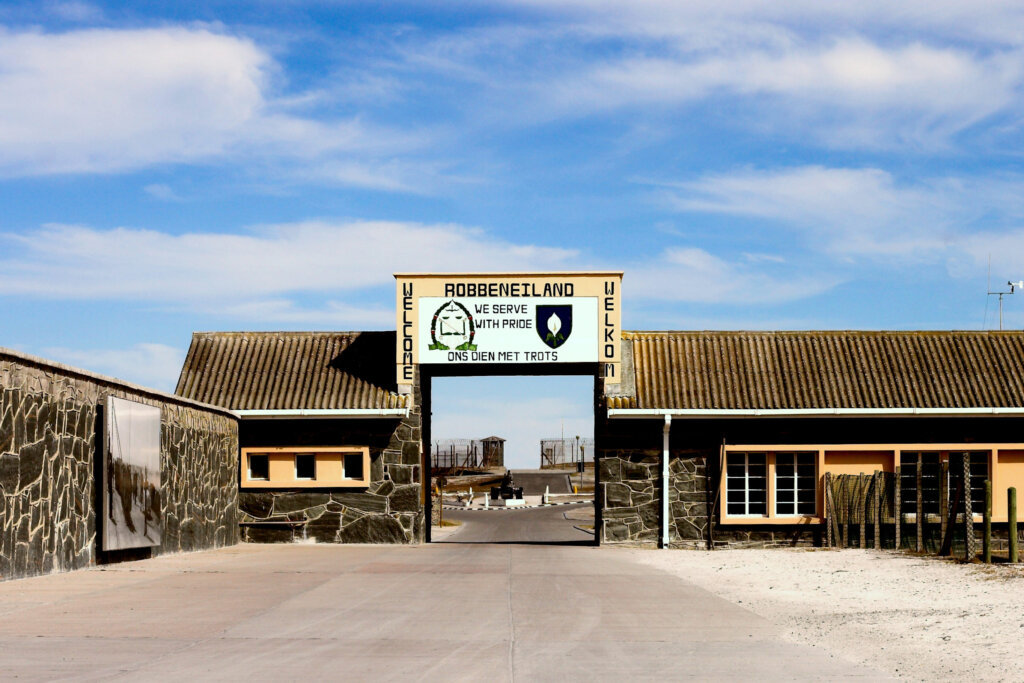
- Image credit: Rhino Africa (https://blog.rhinoafrica.com/2023/07/13/why-you-should-visit-robben-island-in-cape-town/)
-
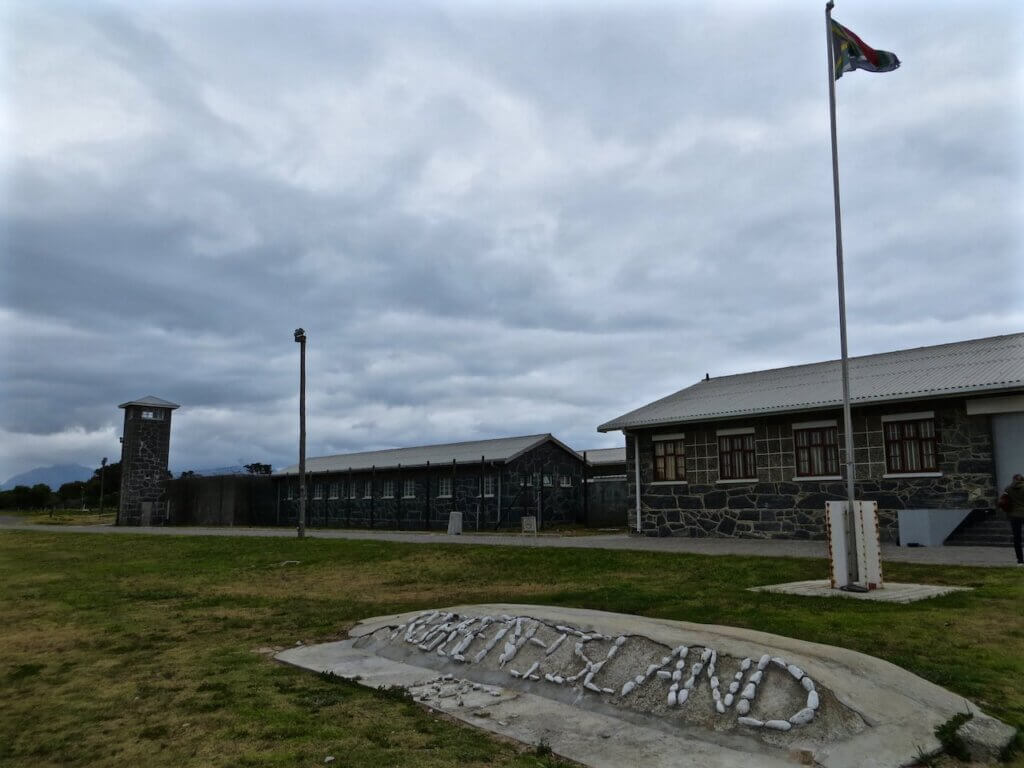
- Image credit: I Travel Forever (https://www.itravelforever.com/the-nelson-mandela-prison-tour-to-robben-island/)
Kirstenbosch National Botanical Garden
A tranquil retreat located in the middle of the city, Kirstenbosch has themed gardens, walking trails, and landscaped areas that showcase the rich diversity of South Africa's flora, from delicate wildflowers to towering trees. The highlight of the garden is the iconic Centenary Tree Canopy Walkway, also known as the "Boomslang" (tree snake) for its sinuous shape. This elevated walkway offers a unique perspective of the garden, allowing you to stroll among the treetops and enjoy panoramic views of Table Mountain and the surrounding landscapes.
On weekends, the vibe is amazing with cultural events, outdoor concerts and art exhibitions. You also have several picnic areas, restaurants and gift shops on site. Keep about 1-2 hours to explore the botanical gardens.
-

- Image credit: Medium (https://medium.com/@southafricatravel/fun-activities-at-kirstenbosch-botanical-garden-3334b9ff4680#)
Greenmarket Square Street Market
Right outside the Caste of Good Hope is this vibrant street market where you can buy several artefacts and souvenirs to take home with you. The street market is cheap but do negotiate – vendors are likely to quote x4 or x5 times the price, expecting you to bargain. The market closes by 6 pm, so if you wish to shop, make sure you get there before the closing time. Be aware of your belongings while you’re here!
Kloof Street
In the evening, head to Kloof Street a vibrant and eclectic thoroughfare located in the heart of the city, lined with trendy boutiques, hip cafes, artisanal eateries, and chic bars. Kloof Street is known for its bohemian atmosphere and laid-back vibe, characterized by its tree-lined sidewalks, colourful Victorian-era buildings, and bustling sidewalk cafes, creating a charming and inviting ambiance that encourages leisurely exploration.
Suggestion: Dine at Kloof Street House, a charming restaurant housed within a beautiful Victorian-era building, offering a unique dining experience that combines elegance, sophistication, and old-world charm.
Day 4 in Cape Town
Today, you will explore the Cape Peninsula.
Muizenberg & Kalk Bay
You know all the photos you see of Cape Town’s beaches with colorful huts? Yep, that’s Muizenberg, a charming coastal town located along the False Bay coastline. If you haven’t rented a car so far on your trip, today is that day when you should do it because the driving distances are long! Muizenberg beach is famous for swimming, surfing, and sunbathing but also a bustling promenade lined with cafes, restaurants, and surf shops. We took lot of photos on the beach next to the colourful huts here, but I found the crowd at the swimming part of the beach not all that much to my liking!
Just a short drive from Muizenberg lies the picturesque town of Kalk Bay. In terms of the town offering as well as the vibe, I found Kalk Bay better than Muizenberg, with a variety of cafes, bistros, and seafood restaurants serving up fresh and flavorful cuisine.
Boulder Beach
This was the highlight of our trip to the Cape Peninsula. All those photos of penguins on the beach? Yep, that’s here! There are two parts to the Boulder Beach – one, which is a pristine sandy beach with crystal-clear waters and another, which has a wooden boardwalk that allows you to walk to the penguin colony and view them from a distance. If you’re lucky, the penguins sometimes walk from this beach to the Boulder Beach, where you can get up-close and personal with them. Otherwise, the penguin colony is only accessible from the viewing platform, you can’t access the actual beach where the penguins are chilling and sunbathing.
There’s a ticket to enter both the Boulder Beach & Penguin Colony, which highly restricts the crowd and that’s what has helped maintain the exclusivity and untouched charm of the area. This is a must visit unique experience in the Cape peninsula!
Cape of Good Hope
Located at the southern tip of the Cape Peninsula, the Cape of Good Hope is known for its rugged natural beauty and is a fantastic location to catch the sunset. You can also enjoy panoramic views of the Atlantic Ocean and False Bay from the rugged cliffs and rocky outcrops that line the coastline. The area is also home to a variety of hiking trails and scenic viewpoints, depending on how much time you can spare. Walk to the Cape Point Lighthouse, which offers panoramic views of the surrounding coastline, as well as the old stone fortifications and shipwrecks that dot the landscape.
In the evening, drive back to the city and spend the last night at V&A Waterfront. I could personally not get enough of that place!

